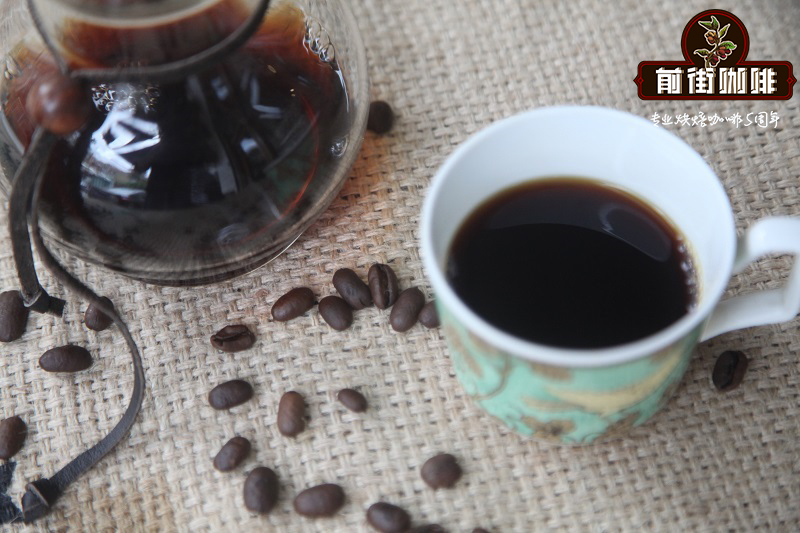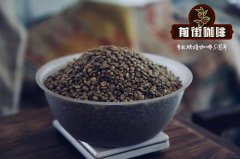Water-washed sun-cured coffee beans explain in detail the difference in the taste of water-washed sun-cured coffee beans

Professional coffee knowledge exchange more coffee bean information please follow the coffee workshop (Wechat official account cafe_style)
Usually when drinking coffee, it is always written on the labels of merchants such as sun exposure, water washing, honey treatment, and so on. Sun exposure and water washing are relatively easy to understand, but what honey treatment and wet planing method really do not understand at all. So the editor would like to talk to you today. What are the common methods of coffee treatment? But because of the more content, the editor decided to talk about tanning and washing first today.
In fact, the coffee bean we drink is not a coffee bean growing out, but the feeling of a round fruit.
Coffee beans are not born with dark brown beans. Coffee fruit is shaped like a red jujube fruit, each fruit has two coffee beans, the coffee fruit, coffee beans after processing, will be what we usually see. Coffee production includes harvesting, processing, peeling, picking beans, roasting, storage, grinding, brewing and other processes, in which the "treatment" step is one of the initial keys to affect the flavor of coffee.
There are many ways to treat coffee beans, which will affect the aroma of coffee. Here are two common ways of tanning and washing:
1. Sun method: after the coffee fruit is picked, pick out the immature fruit and miscellaneous leaves, directly expose the coffee fruit to the sun for 3 weeks, and remove the shell after drying. Because the pectin is still attached to the outside, it will have a pectin flavor. The fermentation degree of the solarization method will vary according to the temperature and humidity of the dry environment. Lin Zhe-hao said that South Minas in Brazil is a tropical steppe climate zone, with strong sun exposure, low fermentation and nutty flavor, while Latin America is not, most processes are highly fermented, full of fruity and wine aromas. In addition, the use of mechanical drying of whole fruit drying is also called solarization.
2. Washing method: the key point is that the coffee fruit is fermented after peeling, and the pectin is washed off with water after fermentation. One of the treatment methods used is that after the coffee fruit is picked, the immature fruit and miscellaneous leaves are removed, the outer skin of the fruit is removed, the beans are picked out, and then the beans are washed and soaked, so that the beans begin to ferment, allowing microorganisms and enzymes to decompose the components of the beans and produce sour flavors. The water washing method can also be a dry fermentation method without soaking, and then wash off the pectin with water after fermentation. After fermentation, the beans are then insolated or dried to prevent coffee beans from getting moldy. Properly washed coffee beans usually taste mild and may have a wine flavor, depending on the environment and fermentation.
After the processing of coffee beans, first pick out defective beans, leaving intact coffee beans, and then after varying degrees of baking, will eventually be able to have ever-changing flavor and taste. The subtle differences in each step between coffee production and brewing will affect the quality and flavor of coffee, which is why the world of coffee is so profound and fascinating.
Important Notice :
前街咖啡 FrontStreet Coffee has moved to new addredd:
FrontStreet Coffee Address: 315,Donghua East Road,GuangZhou
Tel:020 38364473
- Prev

What time should I pay attention to when making coffee? What are the steps for making coffee?
Professional coffee knowledge exchange more coffee bean information Please pay attention to the coffee workshop (Wechat official account cafe_style) there are many ways to brew coffee. Using the machine to make coffee is simple, convenient and delicious. However, I still like follicular coffee that can tell my personality. The girl who looks very calm, the accident is an impatient person. An old man who looks impatient.
- Next

How does washing coffee beans make coffee have different flavor description of different treatments of sun and water?
Professional coffee knowledge exchange more coffee bean information please pay attention to the coffee workshop (Wechat official account cafe_style) traditional sun natural treatment process is quite laborious, hand-harvested high-sugar cherries, first placed in the African viaduct in the sun for about 10 days, and then put into the plastic cloth covered greenhouse to create more direct heat, continuous drying, or the harvested coffee cherry
Related
- What is the meaning of lactic acid fermentation with coffee bean treatment?
- How to judge the state of foam by sound?
- How does the latte pull out the unicorn pattern? Come to get for a little trick to improve the flower pull!
- Will flower pulling affect the taste of the latte?
- Do you know the history of coffee?
- The difference between honey treatment and sun washing what is raisin honey treatment?
- What kind of milk can a novice use to make coffee foam to keep the foam longer? The correct method and skills of milking tutorial sharing
- Why do washed coffee beans taste sour? Flavor characteristics of washed Coffee
- Introduction to the skill of how to practice the size and height of water injection around the circle of hand-brewed coffee
- How do beginners practice coffee flower drawing from scratch?

